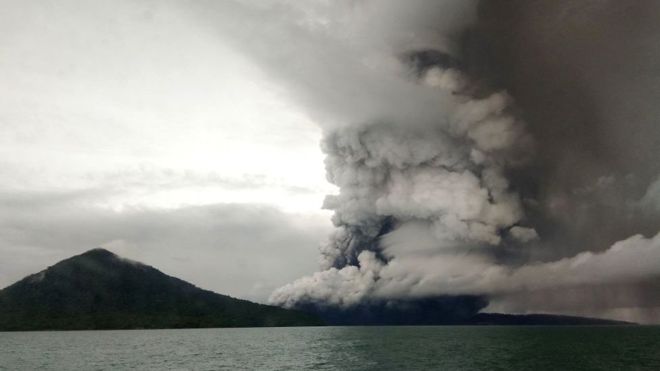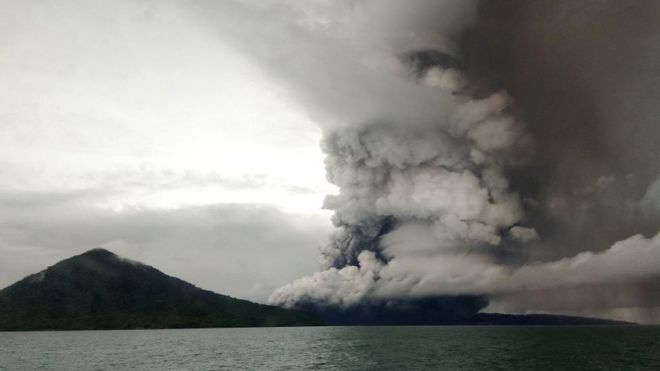 Image copyrightGETTY IMAGES
Image copyrightGETTY IMAGESThe alert level for Indonesia’s Anak Krakatau volcano has been raised to the second-highest level possible, after a series of eruptions.
All flights around the volcano have been rerouted and a 5km (three-mile) exclusion zone has also been imposed.
Indonesia’s disaster management agency (BNPB) said the alert level had been raised from level two to three because of the increased volcanic activity.
Last Saturday, the volcano triggered a tsunami which killed hundreds.
“The volcanic activity of Anak Krakatau continues to increase,” said BNPB in a press statement, citing data from the Volcanological Survey of Indonesia.
“The danger zone [has been] extended from 2km to 5km… people and tourists are prohibited from carrying out activities within a 5km radius.”
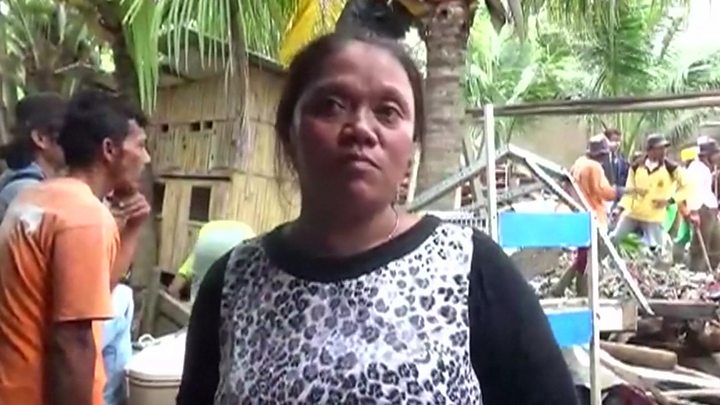
How are flights being disrupted?
Air traffic control agency AirNav Indonesia said it was closing flight routes because the volcanic ash Krakatau was spewing meant the situation was on “red alert”.
An AirNav operations manager told the BBC that between 20 and 25 flights were affected, including some international flights to and from Australia, Singapore and the Middle East.
He said that the disruption was likely to be minimal, although passengers may experience longer journeys and aircraft may need more fuel because of the diversions.
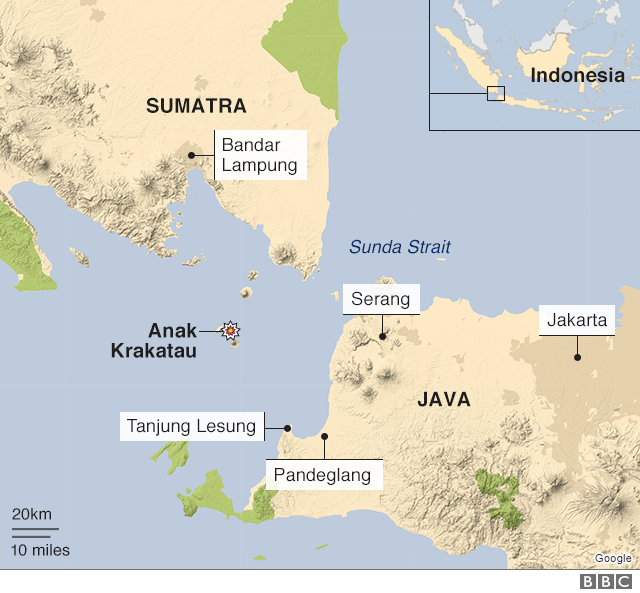
What is happening with the volcano?
Authorities say that Anak Krakatau has become increasingly active with what are known as Strombolian eruptions – short-lived, explosive blasts of lava – being emitted.
BNPB has now imposed a 5km exclusion zone around the volcano, which rises from the sea in the Sunda Straits between Java and Sumatra.
Nobody is believed to be inside that danger zone, but residents that live on both sides of the strait are being told to stay away from beaches due to fears of another tsunami.
Strong winds are carrying thin volcanic ash spewed by the volcano to neighbouring areas, but authorities have stressed this is “not dangerous” and are advising residents to wear masks and goggles.
The volcano has been rumbling on and off since July but has been particularly active since last week.
The agency adds that there may be a new crater hole under the sea and that explosions are ongoing, with eruption sounds heard several times a minute.
What happened with the tsunami?
On Saturday, vast waves engulfed coastal towns on the islands of Sumatra and Java leaving at least 430 dead and more than 150 missing.
It destroyed hundreds of buildings, sweeping away cars and uprooting trees in several popular tourist destinations.
At least 16,000 people still remain displaced and rescue workers are struggling to reach remote areas of the country that have been hit by the tsunami.
Thousands of people are living in temporary shelters like mosques of schools, with dozens sleeping on the floor. A state of emergency will stay in place until 4 January.
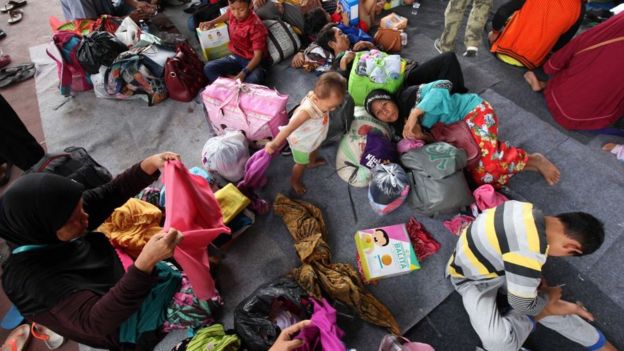 Image copyrightGETTY IMAGES
Image copyrightGETTY IMAGESAccording to some evacuees, clean water, fresh clothes and blankets are in short supply.
Aid is only starting to just reach the town of Sumur that was cut off by the tsunami, with volunteers having to piece together makeshift bridges out of concrete blocks to reach the area, reports say.
It is believed that volcanic activity from Anak Krakatau set off undersea landslides which in turn generated the killer waves.
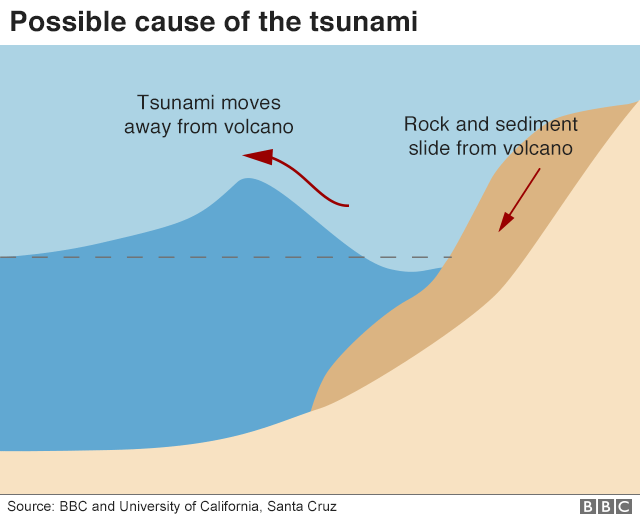

Indonesia is prone to tsunamis because it lies on the Ring of Fire – the line of frequent earthquakes and volcanic eruptions that circles virtually the entire Pacific Rim.
In September, more than 2,000 people died when a powerful earthquake struck just off the central Indonesian island of Sulawesi, setting off a tsunami that engulfed the coastal city of Palu

